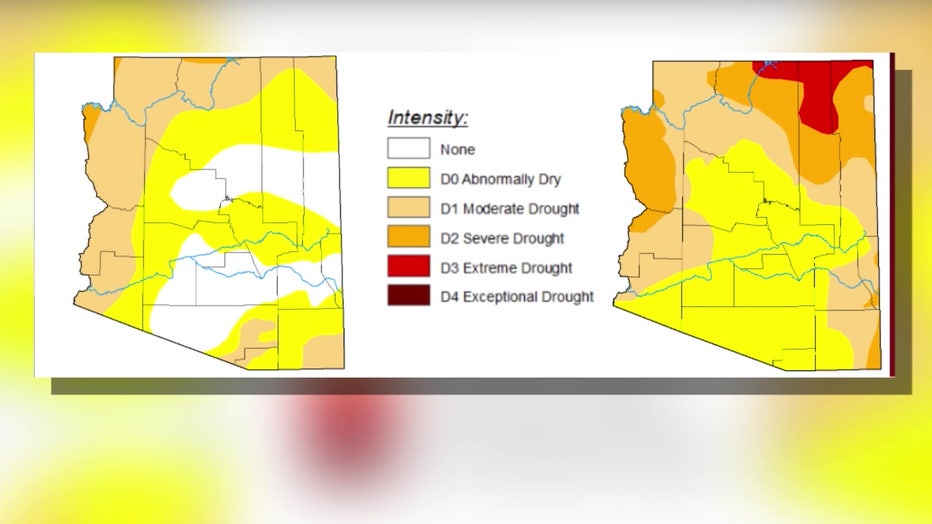Are recent winter storms helping with Arizona's drought conditions?

Expert weighs in on whether recent winter storms are helping with Arizona's drought
In recent weeks, Arizonans who have seen a number of winter storms pass through the state may be asking whether the storms are having an impact on Arizona's drought conditions. FOX 10's Stephanie Bennett spoke with an expert to find out.
PHOENIX - Experts say with all the rain and snow that Arizona has received recently, the state's drought conditions are actually improving.
A comparison of drought maps from a year ago and from recent days show the difference the winter storms have made. The map from early 2022 shows the entire state was under a drought, with the northwestern part of the state suffering from extreme drought.
The map from recent days shows most of the state either has no drought, or is abnormally dry. Some parts of Mohave and Coconino Counties, however, remain under a severe drought.
Overall, state meteorologists say it is a positive step in the right direction.
"We had such an amazing monsoon season last summer. That was exceptional. Prior to that, though, if we go back to April and May, those were the driest Aprils and Mays on record. So, we are really fortunate to have a nice, wet monsoon season. It stayed wet through the end of the year. We had the 15th coldest November on record. December was wet, and January is looking wet," said Arizona State Climatologist Erinanne M. Saffell.
Long-term drought still an issue
While the outlook is good in the short term, the start still has a ways to go before making a dent on the long-term drought that is gripping the state.
"So, our short-term drought is what we see with our precipitation right now. It's allowing the ecosystem to build, but also understanding that we look at the long-term drought areas, and that is kind of a longer time frame, and we still have a little bit of work to do with our long-term drought." said Saffell.
Storms are helping replenish Arizona's water supplies
The majority of water that Arizona uses comes from groundwater, along with the Salt River and the Verde River. About 30% to 35% comes from the Colorado River. Most of the water in our state is used for agriculture, and 2022's monsoon season, along with recent rains, are helping top up the supply.
"We look at the Salt and Verde River quite a bit. That helps manage what happens in the Metropolitan Phoenix Area, and they are at about 70% to 71% of their levels right now," said Saffell.
Snowpack also helps recharge the water supply, as they replenish the rivers and homes onces it melts. This means Arizonans will rely more on this natural water source.
"We are at 150% of median snow water equivalent," said Saffell. "We are doing exceptional right now."
Saffell says Arizona is using about the same amount of water that the state used in 1950, thanks to conservation efforts, alongside restrictions on farm irrigation.
As for what's to come in 2023, data so far suggests we will continue to see wetter weather in January, but a dry spring is possible.
Read More Arizona Weather Stories
- Watch: Snow and windy conditions at Arizona Snowbowl
- NTSB: Cloud shot up in front a plane before severe turbulence


